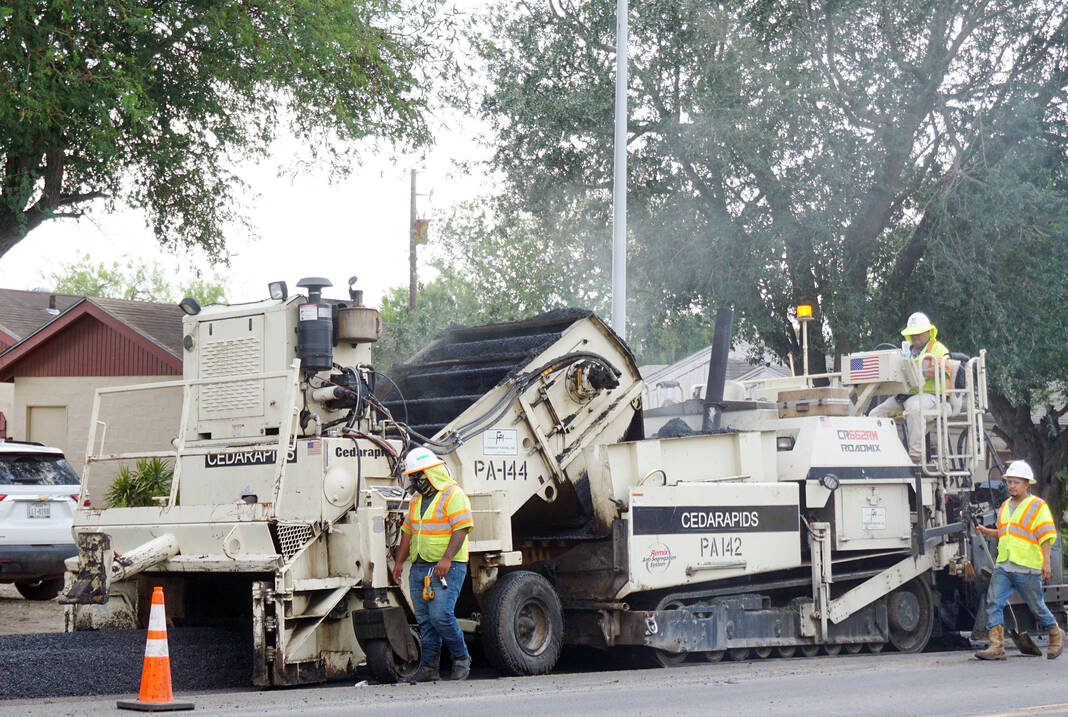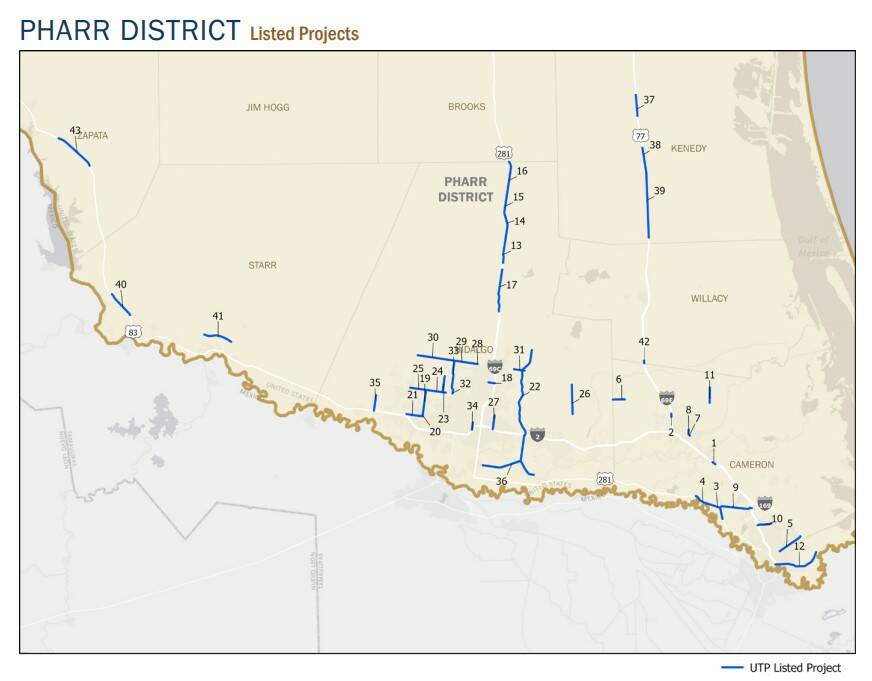
Bumpy, old and congested roadways across South Texas will see much-needed improvements as more money than ever before will be flowing to the Rio Grande Valley over the next 10 years as a result of state and federal funding announced this week.
“You’ll be able to see it, feel it and live it,” Rep. Terry Canales said Friday. The state representative for the Valley is also the chair of the Transportation Committee.
About $2.5 billion are projected for the next 10 years to improve highways, roads and other infrastructure through an annual process known as the Unified Transportation Program, or UTP for short.
“The 2.5 billion will be spent on infrastructure that will affect everyone’s daily lives here in the Rio Grande Valley. It’s going to help relieve congestion, improve safety on roads and have a real effect on the community we live in,” Canales said.
The UTP plan guides the development of transportation infrastructure across the state of Texas. While it’s not a fixed budget, the locally generated plan helps TxDOT to prioritize infrastructure projects statewide.
SLATED PROJECTS
Drivers from Starr to Cameron and up to Willacy and Kennedy counties will gradually see changes to some of the most headache-inducing parts of their commute.
Traffic-clogging overweight trucks will be rerouted from downtown Brownsville and away from schools and businesses through the proposed SH 32 East Loop connecting the Port of Brownsville to the Veterans International Bridge, according to Ray Pedraza, TxDOT’s public information officer.
State Loop 195 in Starr County is expected to provide relief to U.S. 83 from Roma to Rio Grande City. It’s a project that will be built in three segments. The first part, from FM 755 to FM 3167 was approved in this year’s UTP.
Hidalgo County will see upgrades to the popular and congested I-69/U.S. 281 area.
More upgrades to the recently completed I-69E improvement north of Raymondville will be seen near the Kenedy County and Willacy County line.
“Regarding the U.S. 77/I-69E upgrades, we started a process here in the Valley where we’re building the interstate upgrade process from south to north and this is a continuation,” Pedraza explained.
The Cameron County project is expected to start taking bids for construction in the 2026 fiscal year while the others are scheduled to take bids in fiscal years 2027 and 2032.
A complete list of those projects are seen in the map below showing areas spread throughout the entire Pharr district which includes Cameron, Hidalgo, Willacy, Starr, Kenedy, Jim Hogg, Brooks and Zapata counties.

SIGNIFICANT INCREASE
Andrew Canon, the executive director for the RGV MPO, said the amount represents a significant increase from previous years. Canon recalled five years ago when the district received $500 million compared to the $2.5 billion this upcoming fiscal year. It’s also an increase from last year’s amount of $2.2 billion.
Multiple factors affected the 2023 total including construction costs, population growth and legislative action at both the state and federal level, according to TxDOT’s Pedraza.
Two news releases were shared this week from the governor’s office and Canales’ office. Canales called Gov. Greg Abbott’s news release “disingenuous” for failing to credit the federal government’s historic addition.
“What’s special about this year, is that this 2023 UTP is heavily influenced by the once-in-a-generation Infrastructure Investments and Jobs Act that President Joe Biden and Congress passed into law last year,” Canales said, adding that it was a bipartisan bill.
According to TxDOT during a Texas Transportation Commission meeting back in January, $7.3 billion of the $11.5 billion increase to the overall 2023 UTP is related to the Infrastructure Investment and Jobs Act for the letting portion of those funds.
The largest single source of transportation infrastructure revenue comes from the federal funds, and it accounted for 33% of the funding for 2022, Canales explained.
Canon also believes the region’s commerce role in moving produce, automotive goods and electronics affected the weight of funds sent to the Valley.
“We just have to get these goods in and out of our area as quickly and safely as possible, and the secured infrastructure is the way to do that,” Canon said.
“We don’t live in a vacuum. Our projects affect projects north of us. It has a domino effect,” Canales said.
NOT SET IN STONE
The UTP annual funding is an estimate of what’s projected to be sent to each district.
“It’s all been good news. We always have the opportunity that one day it could be bad news as well, but we’ve been working on a very positive trend,” Canon said. “Everything we’re doing on the MPO side is to prepare for a positive trend and plan for a maintained positive trend on funding.”



